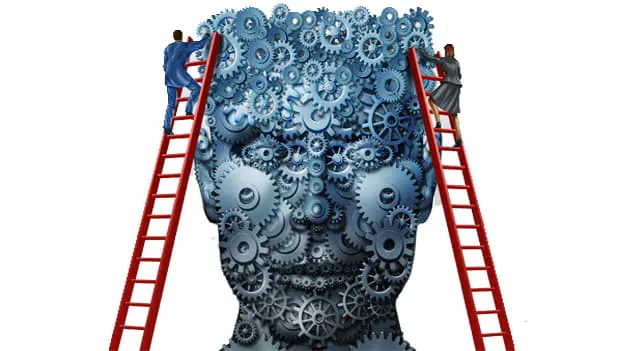People capability is no longer a soft topic, it is the hard edge of national competitiveness.
For decades, the growth conversation in Africa has revolved around infrastructure.
Roads. Power. Rail. Ports. Fibre optics.
The logic is sound. Physical infrastructure is foundational it drives trade, accelerates commerce, and attracts investment.
But in the urgency to build hard infrastructure, we’ve ignored something even more fundamental:
People infrastructure.
And specifically leadership capability.
Because roads don’t lead organisations.
Bridges don’t build culture.
Power plants don’t transform institutions.
People do.
Leadership is the invisible infrastructure upon which execution, innovation, performance, and transformation rest.
If Africa is to compete and thrive in the decades ahead, it must invest not just in highways, but in humans who can lead.
We are building for scale but are we building for sustained success?
Across the continent, organisations are scaling at pace.
Startups are maturing into pan-African businesses.
Family enterprises are professionalising.
Multinationals are decentralising into regional hubs.
Government agencies are digitising.
The infrastructure for growth is forming.
But here’s the question no one is asking loudly enough:
Do we have the leadership capacity to handle what we’re building?
We’ve seen it before.
An organisation opens its third country office, and the culture fractures.
A successful founder steps aside, and the business loses its soul.
A flagship project launches, and delivery stalls because leadership teams are misaligned, underprepared, or overwhelmed.
This is not a talent issue. Africa has talent.
It’s a readiness issue and more precisely, a leadership readiness issue.

What leadership and people capability as infrastructure actually means
When we say leadership is infrastructure, we don’t mean it metaphorically.
We mean it structurally, strategically, systemically.
Leadership is what connects:
- Vision to execution
- Strategy to culture
- Innovation to results
- People to purpose
- Systems to outcomes
When leadership is strong, things move.
When it’s weak, everything stalls, regardless of how well-funded, resourced, or designed the system is.
Leadership is what makes infrastructure work.
The leadership/people capability gap: Africa’s quiet risk
Most African organisations, public and private, are dangerously underinvested in leadership development.
Leadership roles are filled based on:
- Tenure
- Technical expertise
- Political influence
- Crisis response capability
But rarely are leaders appointed or prepared based on:
- Behavioural readiness
- People development mindset
- Strategic foresight
- Cross-cultural intelligence
- Ethical decision-making
And that is the silent threat.
Because poor leadership is expensive, in time, morale, efficiency, trust, and credibility.
Yet, its cost rarely shows up on a balance sheet until it’s too late.
Where investment must shift: Hard + soft infrastructure
There is no doubt we must continue to invest in:
- Roads
- Power grids
- Broadband
- Housing
- Manufacturing capacity
But none of it will translate into meaningful progress if the people managing, leading, and scaling these systems are not capable.
Leadership development is not HR’s job.
It’s not a workshop.
It’s not a soft intervention.
It is economic infrastructure.
The best-run ports in Africa have exceptional port managers.
The most impactful government agencies have leadership stability and strategic thinking at the top.
The most respected African brands have cultivated leadership excellence, not just operational performance.
And that didn’t happen by chance.
Case in point: The multiplier effect of leadership capability
In a recent consulting engagement with a diversified industrial group in West Africa, we assessed their succession pipeline.
Out of 21 senior leaders, only four were ready for expanded roles.
The business was growing. Acquisitions were underway. Investor expectations were high.
But the leadership bench was thin, not due to lack of talent, but due to lack of development.
Over 18 months, we implemented a structured leadership development strategy:
- Behavioural assessments
- Executive coaching
- Business simulations
- Cross-country mobility
- Stretch assignments linked to KPIs
Results:
- 10 additional leaders became succession-ready
- 2 internal candidates promoted to regional MD roles
- Engagement among mid-level leaders rose by 22%
- Revenue from stagnant regions grew by 15%
This is not a training story.
It’s an infrastructure story.
The difference wasn’t new systems it was new leaders with capability.

The strategic imperative: Build people like you build systems
If you’re serious about scaling in Africa, talent cannot be an afterthought.
People capability must be treated as a core infrastructure project, designed with intention, budgeted like capital expenditure, and measured with board-level scrutiny.
Here’s what that requires:
1. Leadership mapping: Codify what good looks like
Too many organisations rely on intuition or personality when making leadership bets. That’s a liability.
You need a leadership success profile built on behavioural science, commercial context, and future readiness. Define what great looks like, by role, by level, by market.
Then embed that into your performance systems, promotions, and rewards.
If you can’t define it, you can’t develop it, and you certainly can’t scale it.
2. Pipeline visibility: Illuminate your leadership bench
Most organisations are flying blind. They don’t know who’s ready, who’s stuck, and who’s burning out.
Use tools like 360-degree feedback, capability assessments, and succession dashboards to bring clarity.
What you don’t see today becomes your blind spot tomorrow.
3. Development investment: Fund capability like capital
Training is episodic. Development is engineered.
Move beyond workshops. Design growth journeys that include:
- Executive coaching
- On-the-job stretch roles
- Business simulations
- Cross-border mobility
- High-stakes projects tied to KPIs
Back it with serious investment, because the return is not just better leaders, it’s stronger business outcomes.
The organisations that win are those that build leadership pipelines, not just PowerPoints.
4. Leadership accountability: Make leaders builders of others
Your best leaders are not just performers, they’re multipliers.
Hold them accountable not just for what they deliver, but for how they grow others.
Evaluate them on:
- Team resilience
- Ethical execution
- Decision velocity
- Culture contribution
And reward accordingly.
Culture isn’t what’s written in the handbook. It’s what your leaders enable, model, and tolerate.
Bottom line:
You can outsource tech. You can borrow capital.
But you cannot outsource leadership.
Treat people capability with the same rigour as any infrastructure investment, because that’s exactly what it is.
Africa’s competitive advantage won’t be ports or power, it will be people
Every country is investing in infrastructure.
Africa’s differentiator will be leaders who scale it.
We must look beyond concrete and cable.
We must see leadership capability as the foundation beneath our roads, the engine within our enterprises.
Because when the world looks to Africa, the real question is:
Do we have leaders who can drive sustainable, inclusive growth?
If the answer is no, nothing else will matter.

